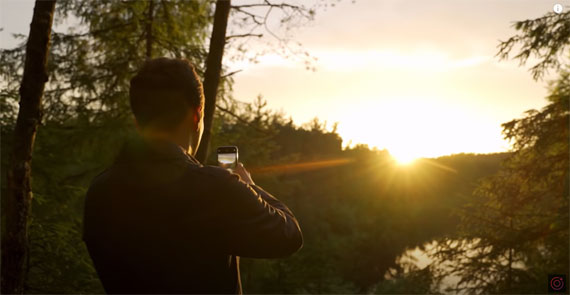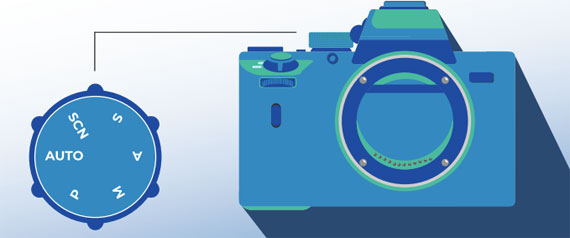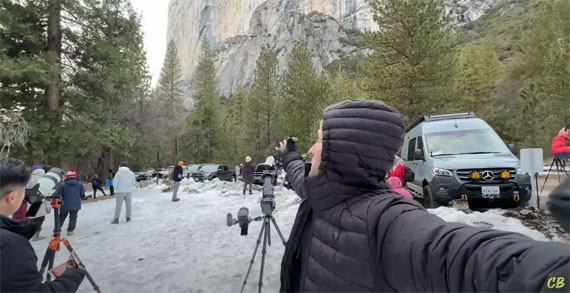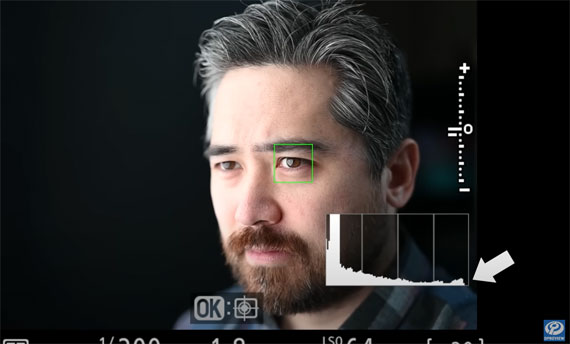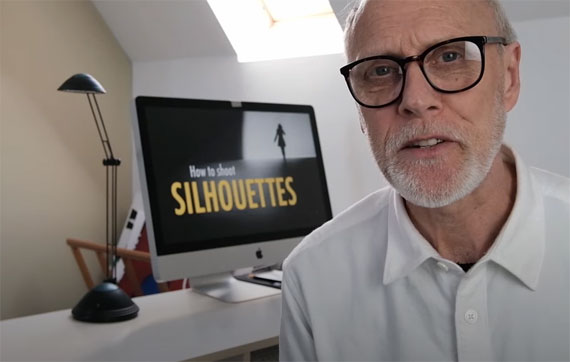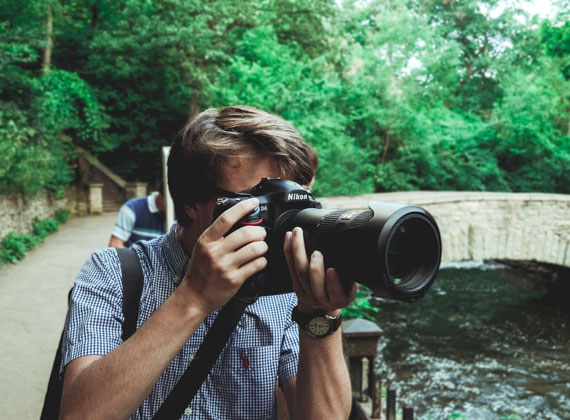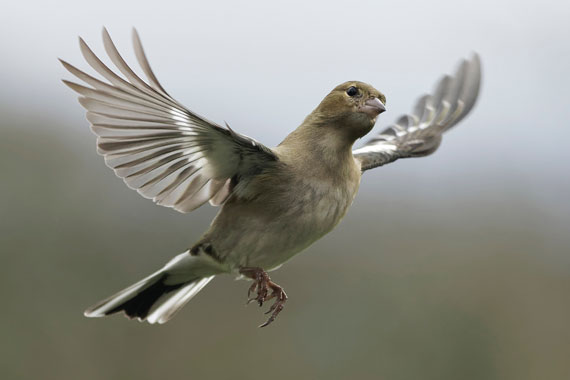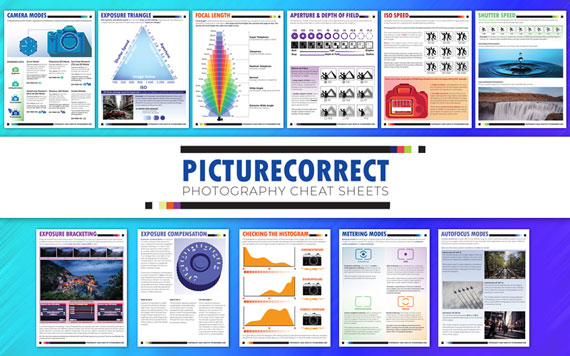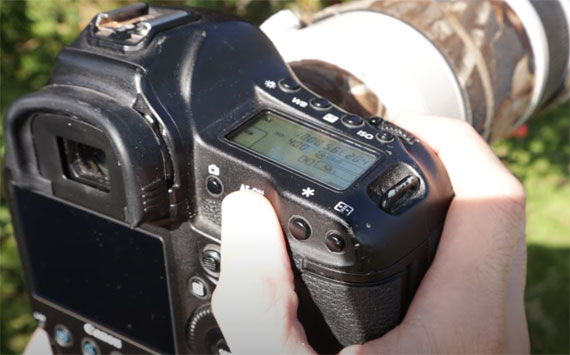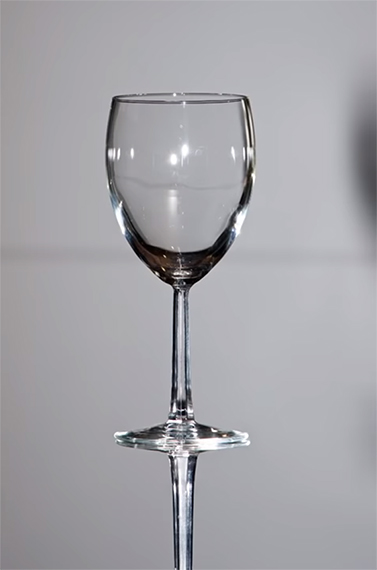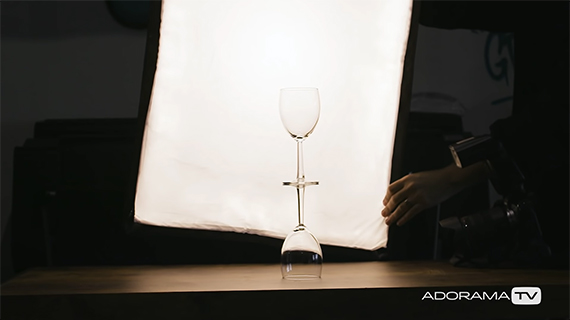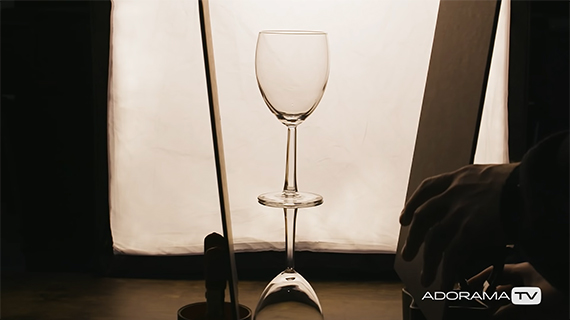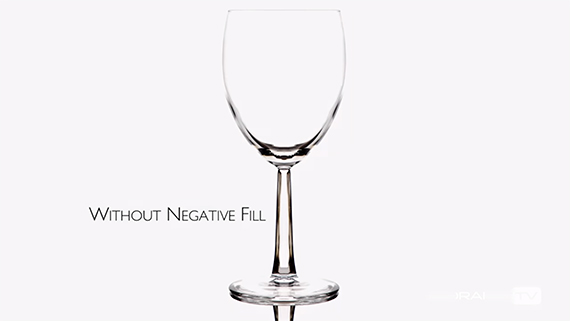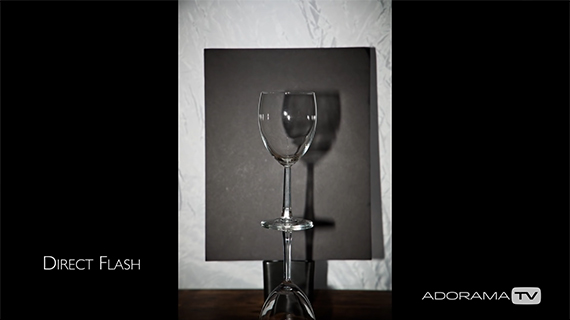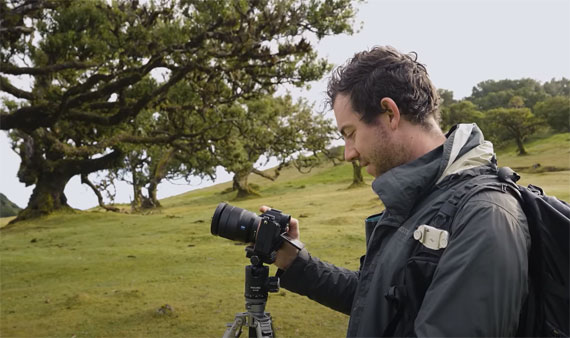This article is based on concepts from Collier’s Guide to Night Photography. Our readers can currently get a discount by using the promo code picturecorrect at checkout.
When photographing at night, the moon will often be your primary source of light. It is therefore very important to know how your photos will appear under different moon phases. Photographing under a full moon can produce drastically different results than shooting under no moon.
You can check the moon phases and the times and locations it will set and rise with an app like PhotoPills or The Photographer’s Ephemeris (TPE).
Shooting Under No Moon
The biggest advantage of shooting under no moon is that your camera can capture more stars since moonlight obscures fainter stars. This is particularly important if you want to capture dramatic shots of the Milky Way.
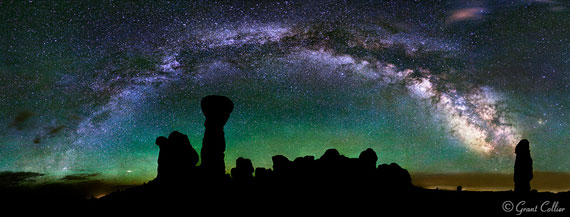
Garden of Eden in Arches National Park under no moon, 70 images stitched at 50mm, f1.2, 10 seconds, ISO 6400.
The biggest disadvantage of shooting under no moon is that less light enters your camera and there will be more noise visible in the photographs.
Photographs taken under no moon and with no light painting will usually render foreground objects as dark silhouettes. This can be good for objects with interesting shapes, like a saguaro cactus, a gnarled tree, or some of the bizarre rock formations in America’s Desert Southwest. It probably won’t work as well for things with less distinct shapes, like mountains or canyons.
If you want to do light painting with a flashlight, you generally want to do this under no moon. However, I personally don’t do light painting much anymore, as I believe it can produce unnatural-looking results. I prefer stacking images if I want to render detail in the foreground under no moon. This is beyond the scope of this article, but I provide detailed explanations on how to do this in my night photography book.
Shooting Under a Gibbous Moon
The advantages and disadvantages of shooting under a full or gibbous moon are the reverse of shooting under no moon. With the bright light of a full moon, you will get less noise in your images. This can be advantageous if you are using an older digital camera or if you don’t have a lens with a wide aperture that can let in more light.
Another potential advantage of shooting under a full moon is that it will illuminate the foreground and bring out the color and detail in the scene, in much the same way as the sun would. If the foreground is the most important part of your image and you’re not as concerned with capturing a dramatic starscape, you might consider shooting under a full moon.
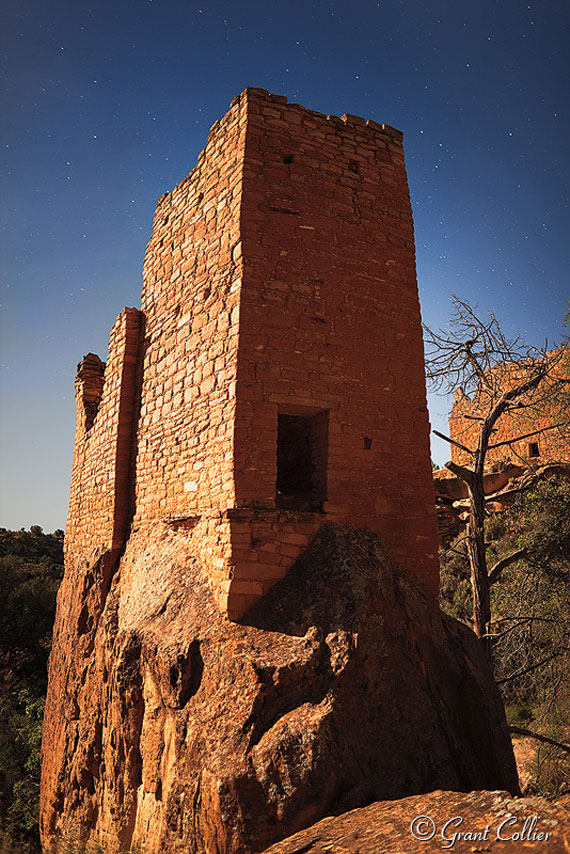
Ruin in Hovenweep National Monument under a bright gibbous moon, 24mm, f1.6, 20 seconds, ISO 600.
The biggest disadvantage of shooting under a full moon is that it obscures the light from the stars, and the skies will not look as impressive.
It generally best to photograph with the moon behind you so that it illuminates the front of the object you are photographing. Also, it is usually better to shoot with the moon low in the sky. If it is high in the sky, it can produce harsh light, just like the sun does during the day. Shooting with the moon behind you and low in the sky will also keep the part of the sky you are photographing a little darker and more stars will be visible.
Shooting Under A Crescent Moon
While there can be some advantages to shooting under a full moon, I find that the bright light usually obscures the stars too much. Also, with newer cameras and fast lenses, noise is not as big of an issue as it used to be. I therefore find shooting under a crescent moon preferable if I want to render detail in the foreground and capture more stars in the sky.
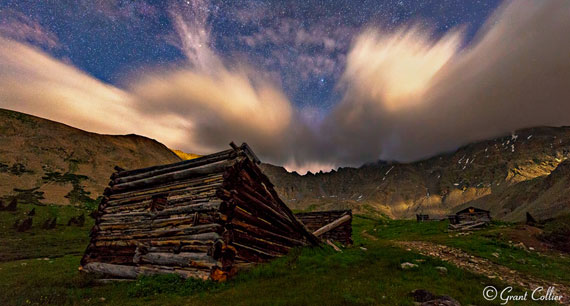
Colorado ghost town under a crescent moon, 14mm, f2.8, 25 seconds, ISO 6400.
I generally like shooting under a crescent moon that is 15%-35% illuminated. This provides just enough light to illuminate the foreground, while only somewhat obscuring the stars. Also, a crescent moon sets fairly early in the night, so if you also want to take shots under no moon, you can do so after it sets.
If the moon is more than 50% illuminated, I find that it starts to drown out the light from the stars too much. I therefore usually plan my photography trips so that they end after the first quarter moon.
For Further Training on Night Photography:
In this fully-updated 2nd edition, Grant Collier sheds light on how to capture these otherworldly images by sharing secrets he has learned over the past 17 years. He explains how to take photos of the Milky Way, northern lights, meteors, eclipses, lightning, and much more.
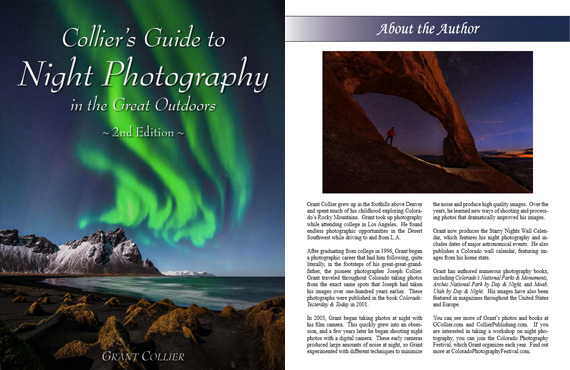
New: Night Photography Guide 2nd Edition
Our readers can get a discount by using the promo code picturecorrect at checkout which ends soon.
Found here: Night Photography Guide 2nd Edition
- - - - - - - - - - - - - - - - - - - - - - - - - - - - - - - - - - - - - - - - - - - - - - - - - - - - - - - - - - - - - - - - - - - - - - - - - -
Did you appreciate this newsletter? Please help us keep it going by Joining Our Patreon Supporters
What are your thoughts on this article? Join the discussion on our Facebook Page
PictureCorrect subscribers can also learn more today with our #1 bestseller: The Photography Tutorial eBook
- - - - - - - - - - - - - - - - - - - - - - - - - - - - - - - - - - - - - - - - - - - - - - - - - - - - - - - - - - - - - - - - - - - - - - - - - -
The post How Moonlight Affects Night Photos appeared first on PictureCorrect.
from PictureCorrect https://ift.tt/wSIa9K8
via
IFTTT






